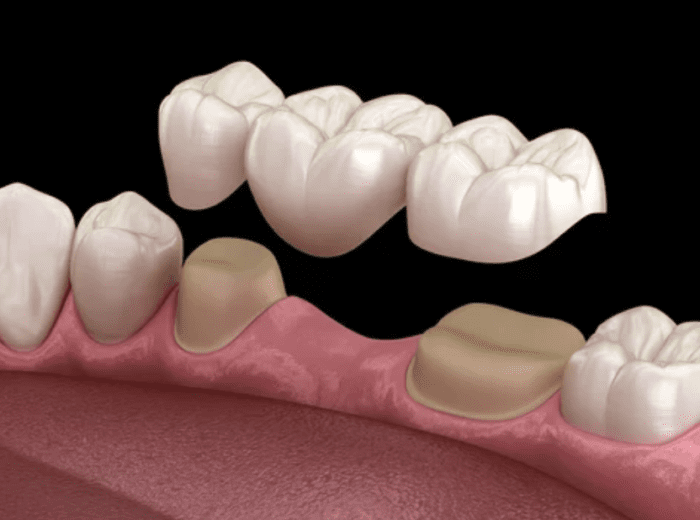Losing one or more teeth is a stressful experience. There are many restorative options available, but they may not always feel great. It can make it overwhelming. However, your dentist will be able to walk you through each potential option so that you can select what is best for you.
If you do have missing teeth, you must replace them as soon as possible. The longer you wait to get a substitution, the more likely you will experience negative side effects. For example, your remaining natural teeth can loosen, potentially causing the loss of more teeth. This is because your teeth need the support of each other in order to stay in place.
Also, your jawbone can begin to deteriorate without a replacement. The bones in your mouth need the pressure and stimulation of your teeth. Therefore, it is necessary to begin the replacement process.
When talking to your dentist about replacement options, you should consider dental bridges. If you desire a quick, durable option for missing teeth, think about dental bridges.

What Are Dental Bridges?
Dental bridges are false teeth that secure to your remaining teeth. Typically, dental bridges are made of a combination of porcelain teeth, composite resin, and metal. Generally, there are bridge options for any type of missing teeth.
The most common type of dental bridge is a traditional bridge. Like most bridges, these are made of porcelain or ceramics fused to metal. Traditional bridges connect one or more teeth using crowns.
If you have missing front teeth, you may need a Maryland dental bridge. Since this bridge doesn’t utilize molars or pre-molars for support, it uses a metal framework instead. The metal framework has wings on either side of the bridge, which use your remaining teeth for support.
Another type of dental bridge is a cantilever bridge. This bridge is ideal for people who have now than one missing tooth. Specifically, a cantilever bridge is for patients who have teeth on only one side of their gap.
You can even use dental bridges if you have other dental work. For example, an implant-supported bridge utilizes dental implants to keep the bridge in place. Therefore, dental implants hold the bridge in place rather than natural teeth.
Benefits of Dental Bridges
Getting a dental bridge can halt the deterioration process. Once you lose a tooth, you can lose more if you don’t get a replacement.
When you have missing teeth, you also have to deal with other issues that are not aesthetic. You can have trouble eating and speaking. A dental bridge can eliminate these issues.
Dental bridges typically last about six years before they need replacing. With quality care, your dental bridge can last up to 10 years or more.
Luckily, you can continue your normal oral care routine. This means that you can brush and floss your dental bridges, much like your natural teeth. Your dental provider will likely recommend a special type of floss that can thread between your dental bridge and your gums. This will minimize your risks of developing gum disease over time.
